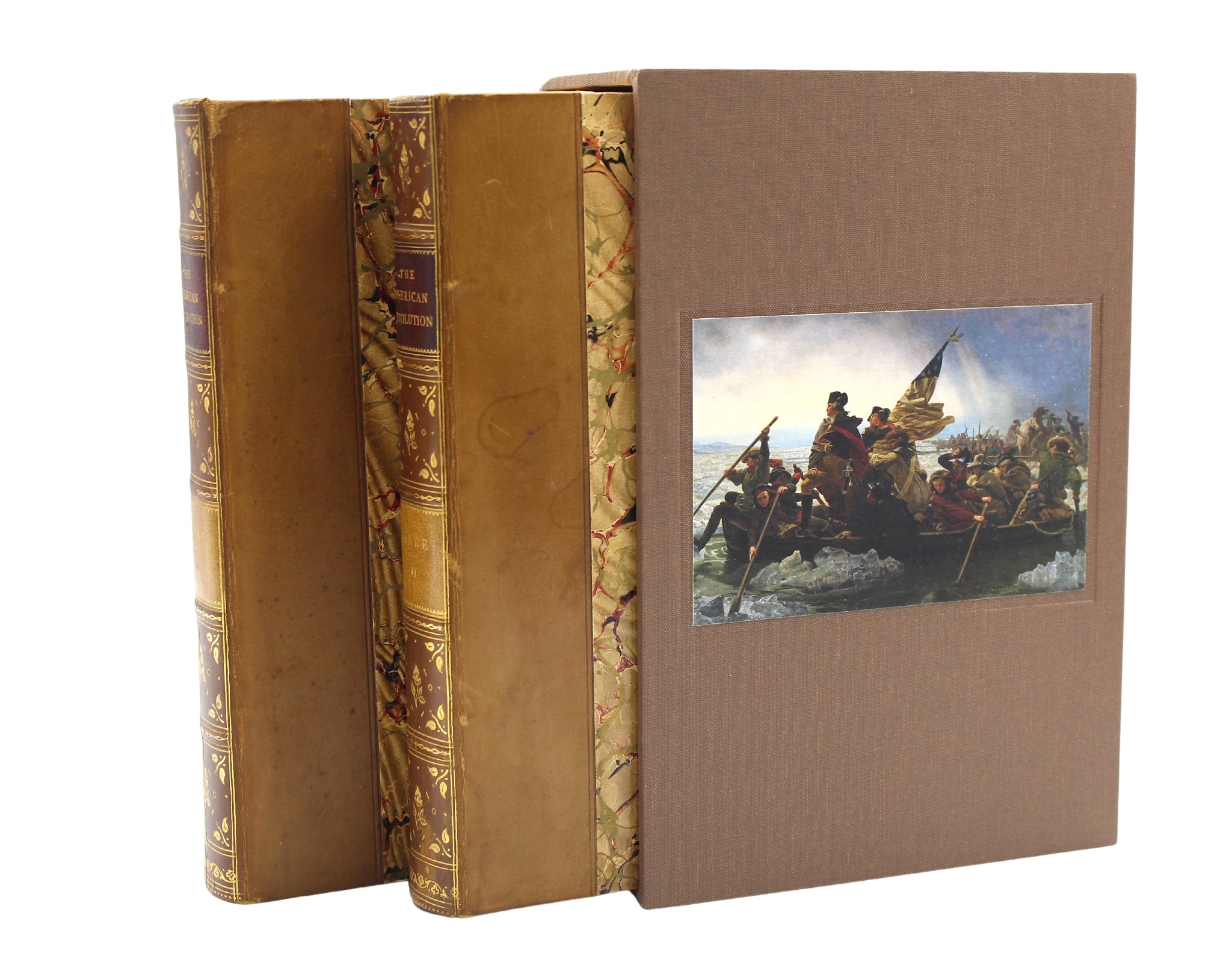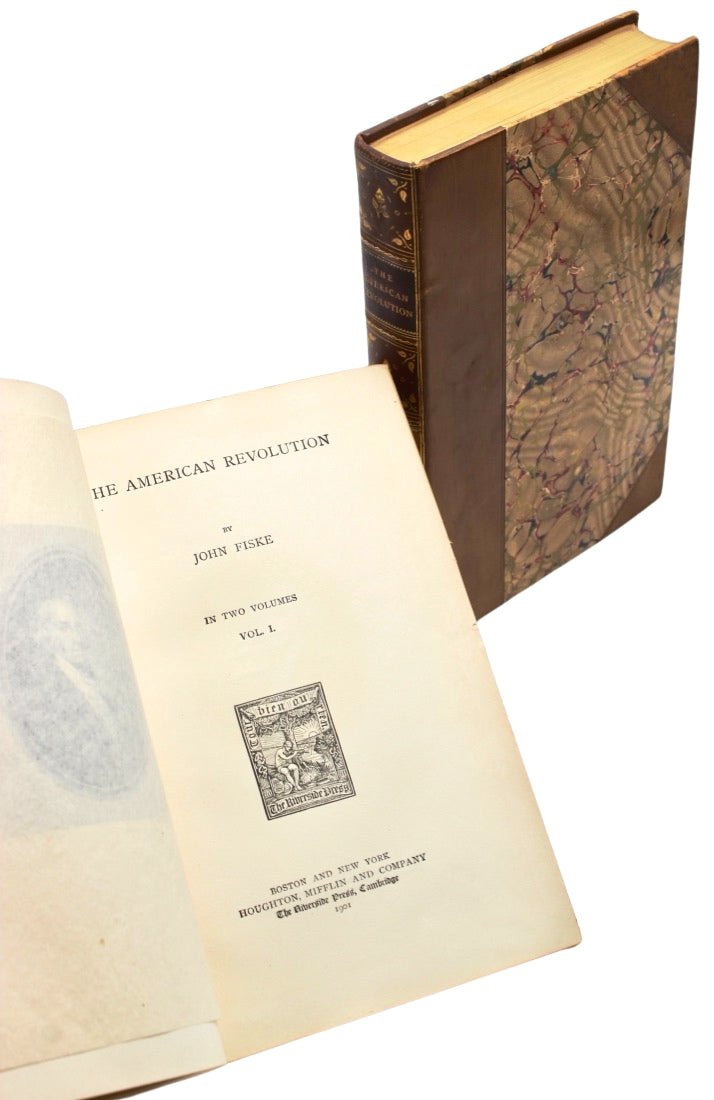










The American Revolution by John Fiske, Later Printing, Two Volumes, 1901
Fiske, John. The American Revolution. Boston and New York: Houghton, Mifflin and Company, 1901. In two volumes. Reprint ("Twenty seventh thousand"). 8vo. Three-quarter tan calf, blind and gilt stamped, over marbled paper-covered boards, red and tan morocco spine labels. Presented with new archival slipcase to hold both volumes together.
Presented is a 1901 reprinted two volume set of The American Revolution by John Fiske. Originally published in 1896 by the Riverside Press, these volumes tell the political and military history of the Revolutionary War.
Fiske traces the succession of military events following the Battle of Lexington and shows how, by their efforts in the field, the Americans secured independence. The volumes end with the surrender of Yorktown, yet reserve the peace negotiations for a separate treatment.
“[Fiske] has given the reader an admirable account of events of in the field; he has traced in a way most complimentary to the commander the development of Washington’s military policy; he has taken special pains to do justice to Arnold; Greene and Cornwallis also come in for their share of price, while Gates received the severest condemnation. All this is done with the clearness and force of style which the readers of Mr. Fiske have learned always to expect” (Osgood, Political Science Quarterly, 1891).
John Fiske (1842 – 1901) was an American philosopher and historian. He was a university lecturer on philosophy at Harvard, later becoming a Harvard history instructor and assistant librarian from 1872-1879. In 1880, Fiske began to write and speak about American history, promoting the concept of the United States as the climax of a historical evolution toward a free democratic republic. He gave many hundreds of lectures, chiefly upon American history, in the principal cities of the United States and Great Britain, including the University College London in 1879 and at the Royal Institution of Great Britain in 1880. Beginning in 1881, he lectured annually on American history at Washington University in St. Louis and, beginning in 1884, held a professorship of American history at that institution, but continued to make his home in Cambridge, Massachusetts.
From 1885 to 1900, Fiske published a series of popular works, including The Critical Period of American History (1888), on the American colonial and revolutionary periods, written in a lucid, dramatic style that was easy to read and geared toward the American populace. Fiske was elected a member of the American Antiquarian Society in 1884.
CONDITION: Very good + condition. Two volumes. 8vo. 344; 305 pp. Three-quarter tan calf, blind and gilt stamped, over marbled paper-covered boards, red and tan morocco spine labels. Top edges gilt, other edges untrimmed; matching marbled endpapers. Presented with a new archival slipcase, to protect and hold volumes together.
Book Dimensions (both volumes together): 8 1/2” H x 5 1/4” W x 2 1/2” D. Slipcase Dimensions: 8 3/8" H x 5 7/8" W x 3" D.
Accompanied by our company's letter of authenticity.
Pickup available at Colorado
Usually ready in 4 hours

The American Revolution by John Fiske, Later Printing, Two Volumes, 1901
Colorado
1 Lake Avenue
Colorado Springs CO 80906
United States
Choose options











Frequently Asked Questions
FAQs
Yes, all of our Antiques are certified authentic. Every antique comes with a signed Letter of Authenticity that details the item’s history, its current condition including any conservation, binding, or framing work, and the item’s provenance. The Letters of Authenticity are priced valuations by our authentication specialists, who assure that items are original and unconditionally guaranteed as genuine for life.
We pack and ship your items from our gallery in Colorado Springs. You may also choose to come pick up your order. Antique items are carefully packed and insured during shipping. The shipping price will be calculated at checkout.
We acquire from a variety of trusted sources all over the world, but mostly through auctions and private collections within the United States. All provenance information will be listed on the Letter of
Authenticity accompanying your purchase.

